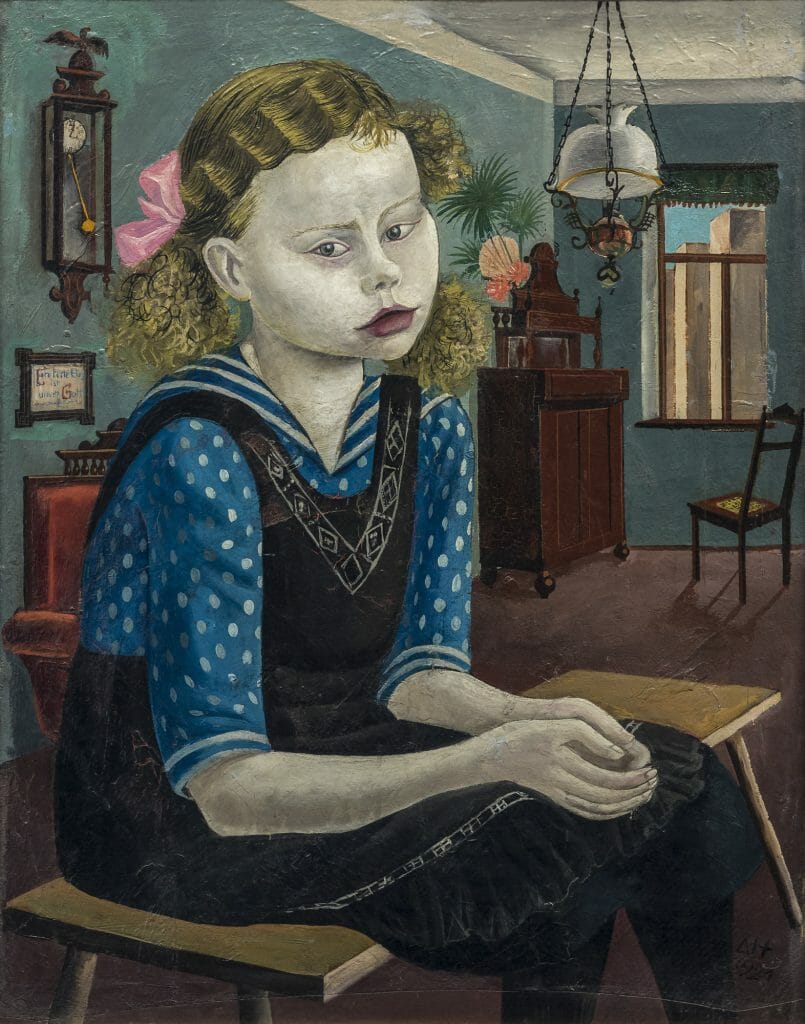300 X DIX
Werke von 1912 bis 1969
The Kunstsammlungen Chemnitz – Museum Gunzenhauser are presenting an extensive special exhibition of works by the artist Otto Dix (1891-1969) from 29 April to 9 September 2018. Over 300 works by the central protagonist of New Objectivity will be on display on four floors throughout the museum. They form the core of the Gunzenhauser Collection. The bundle of his works is one of the largest museum collections in the world. Paintings, watercolours, pastels, drawings and prints from all creative phases offer a representative cross-section of his artistic development: from early Expressionist works to major works of the New Objectivity movement and the large symbolic landscapes from his time of Inner Emigration.
On the occasion of the tenth anniversary of the Museum Gunzenhauser and the 875th anniversary of the city of Chemnitz, the collection of works by the artist Otto Dix will be presented for the first time in its entirety on all four floors of the museum. In addition to the works that have been in the collection from the very beginning, some 60 works will be on display that have come into the museum from the founder’s estate since November 2015. These include such important paintings as the Sunday Walk of 1922, for which Alfred Gunzenhauser wrote about his own collection at the opening of the museum in 2007: “I have really lived with my works of art. They looked at me daily from every available wall.”
The exhibition will include 40 paintings, 50 watercolours and gouaches, 100 drawings and 110 graphics by Otto Dix. They illustrate not only the specific focus of Gunzenhauser’s collecting activities, but also the work of this central artist in his collection. The presentation of the works in the ten thematic areas of Big City, Circus, Brothel, Portrait and Self-Portrait, War, Death, Religion, Mythology and Landscape illustrates the multifaceted nature of Otto Dix and conveys an authentic picture of the dazzling artistic personality. The Gunzenhauser Collection contains works from every year of his creative work, so that his artistic development can be traced through all styles and techniques used.
The presentation of the works begins with Otto Dix’s expressionist early work, his examination of Dadaism and the emerging New Objectivity up to the mid-1920s. Here the development of the artist from a young student at the Dresden School of Arts and Crafts to one of the most important representatives of the artistic avant-garde in Germany can be traced. Numerous important works provide a representative overview of this phase of his career: from expressionist gouaches from the First World War to the “cosmic” self-portrait Red Head (1919) and early major works of New Objectivity such as Farewell to Hamburg (1921), Girls on Sunday (1921) and the Watercolour Artist (around 1923).
This is followed by works from the late phase of Neue Sachlichkeit towards the end of the 1920s and beginning of the 1930s as well as first works – especially drawings – from the period of the Inner Emigration. It is characterized by a stronger reference to the Old Masters, as in the painting Red-Haired Woman (Lady’s Portrait) from 1931. From 1927 to 1933 Dix taught at the Dresden Academy of Art and regularly went with his students to the nearby traditional picture gallery to study the Old Masters. After his dismissal by the National Socialists he retired to Lake Constance in 1933. Here he created a large number of landscapes until 1945, of which the Gunzenhauser Collection has one of the most extensive complexes. 1933 also saw the beginning of a friendship between Dix and the two Chemnitz families of the industrialist Fritz Niescher and the pediatrician Otto Köhler. Especially during the difficult years of the Inner Emigration, both supported the artist with purchases and commissions, among others for the mural “Orpheus and the Animals” for Niescher’s garden pavilion in Chemnitz. In 1934 Köhler temporarily provided Dix with a temporary studio in Chemnitz. The tour through the life and work of Otto Dix finally comes to an end with his late work as a painter and graphic artist.
Directions

